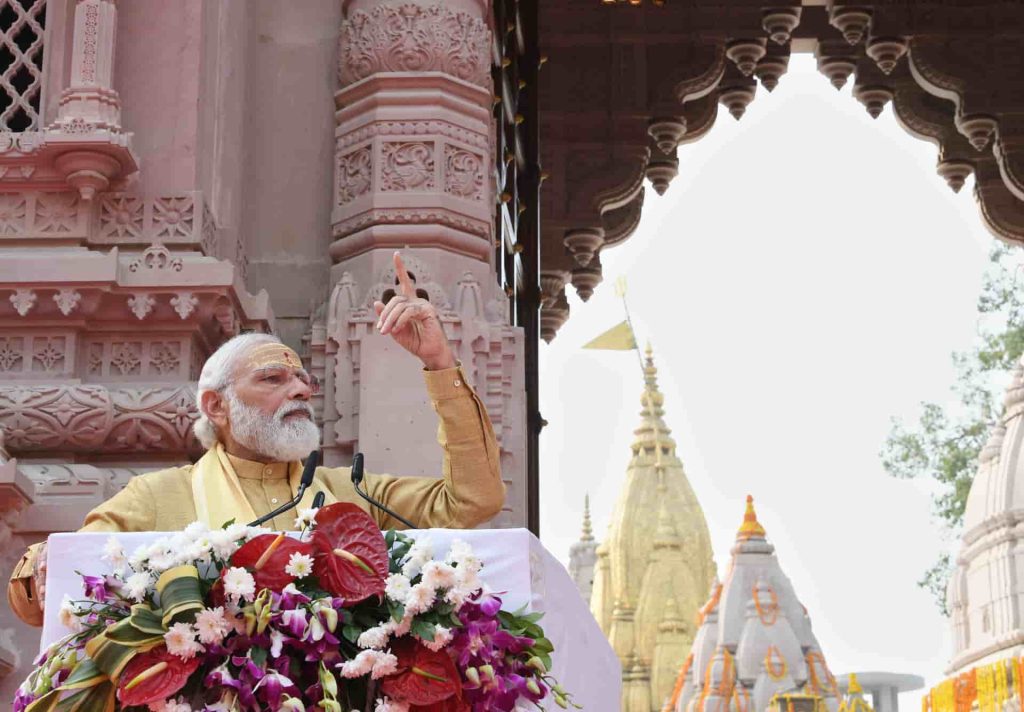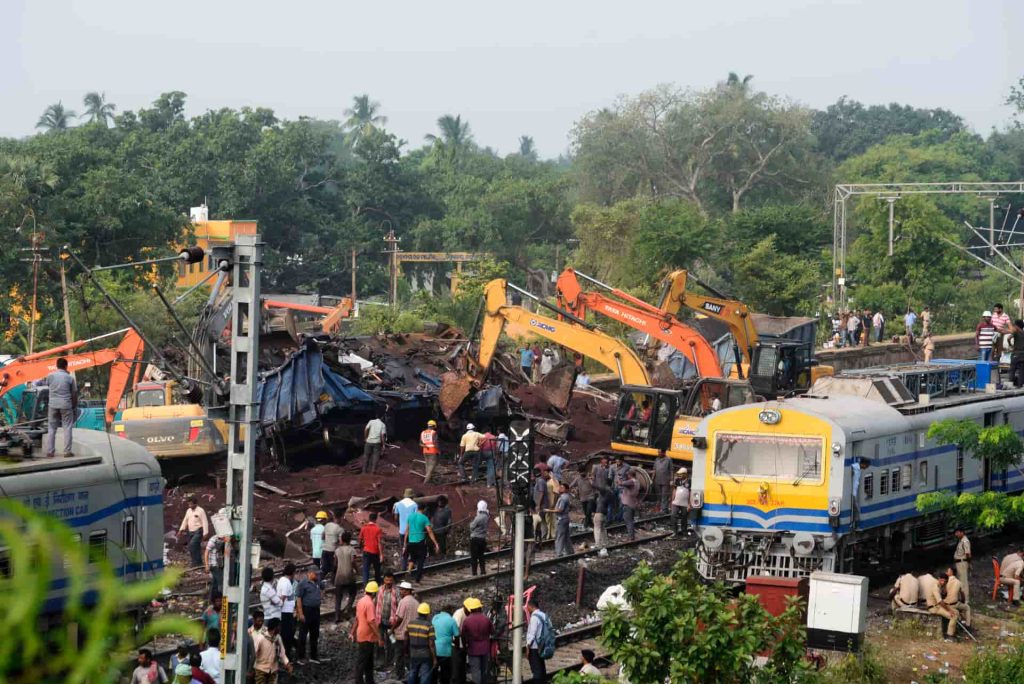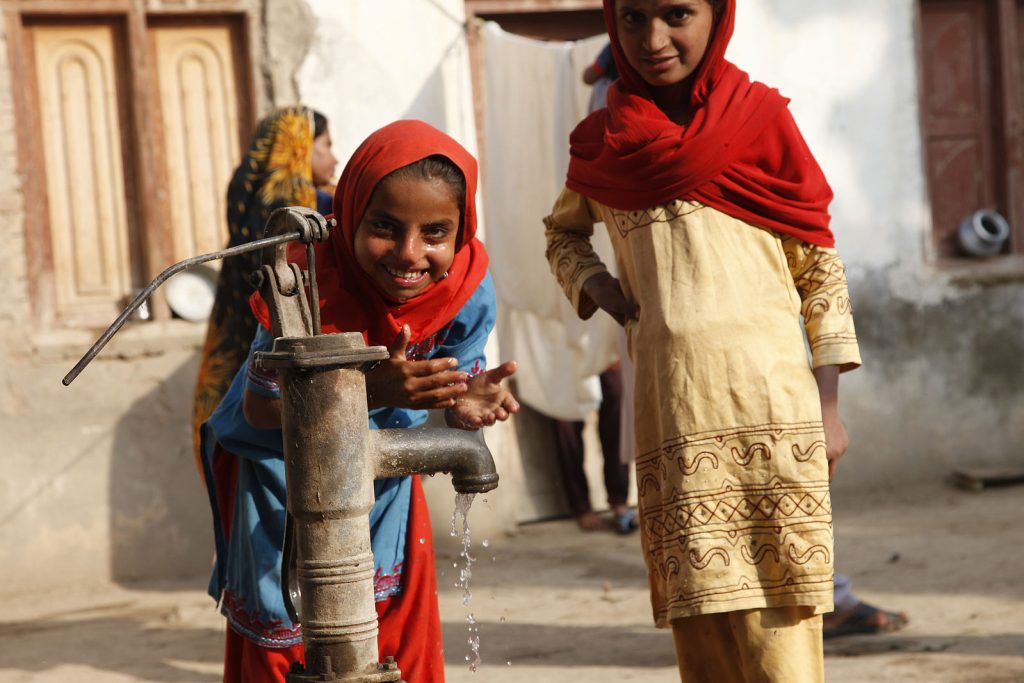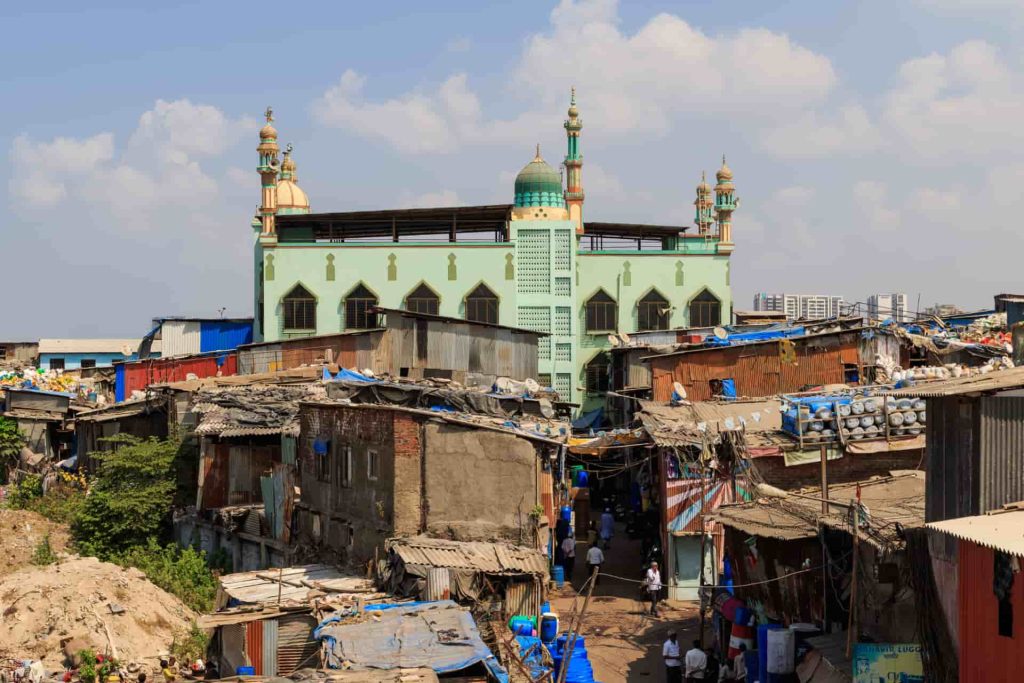India ascends on the world stage, projecting power and prosperity, yet within its borders, the stark reality of disparity and unfulfilled promises persists. What are the steps forward?
India has certainly been in the spotlight these last few months and anyone not looking too closely would be justified in thinking that the country was rising, phoenix-like, from its post-colonial ashes to virtual super power status. In April 2023 it overtook China as the most populous nation on Earth with well over 1.4 billion people.
On August 4, Rahul Gandhi, champion of the Congress Party and heir to the Nehru-Gandhi dynasty, had his two-year prison sentence for disparaging comments made against Modi, suspended by India’s supreme court, suggesting a robust democratic rule of law. Also in August (23rd), India’s Chandrayaan-3 spacecraft landed on the lunar surface. This was all the more spectacular coming so soon after Russia’s failed moon mission. Moreover, it was the very first successful landing on the dark side of the moon. Then, in September, with much pomp and circumstance, India hosted the 2023 G20 Summit. Its presidency may not have been a roaring success, but it was a success nonetheless. Though Russia’s President Vladimir Putin and China’s Xi Jinping did not attend, and organisers had to forego the traditional “family” photo owing to disagreements over Ukraine, the overall outcome was positive, with the African Union’s addition to the block being one of this G20’s notable achievements.
If we put aside the gloss, however, India comes across as a country in denial. While India’s population is comparable to that of China, its poverty level is ten times as high. In 2022, the poverty headcount ratio of $1.90 (PPP) was 10.0% a day in India; in China, by contrast, it was only 0.1%. Moreover, China’s infrastructure is impeccable, which means that living on less is more bearable. India’s on the other hand is shocking. Most towns and cities, including the capital New Delhi, are dirty and shabby. Roads are decrepit and public services, including public transport, education and healthcare are appalling. Homeless people and beggars abound.

Moreover, the current government led by the Bharatiya Janata Party (BJP), which has been in power since 2014, is a Hindu nationalist party. It is bent on stoking extreme Hindu nationalism rather than pursuing a policy of social integration. As a result, mob violence against minorities is commonplace. On September 10, for instance, Nurul Hassan, a 31-year-old civil engineer, was beaten to death when a Hindu mob attacked a mosque in the Satara district of Maharashtra State. Many other worshipers were injured during the onslaught.
Another shocking example happened on May 4 when Two women belonging to the ethnic Kuki-Zo tribe were violently stripped and paraded in a public street while being sexually abused. Two of their male relatives who went to their aid were brutally murdered by the mob. When government officials themselves can be openly hostile, if not actively complicit in such acts of violence towards minorities, is it any wonder that ordinary citizens should feel empowered to jump on the bandwagon. The assassination of Hardeep Singh Nijjar, an Indian-Canadian Sikh separatist involved with the Khalistan movement, is a case in point. Nijjar was shot several times in British Columbia on 18 June 2023. Three months to the day, Canadian Prime Minister Justin Trudeau stated that Canadian intelligence had identified Indian government agents as the perpetrators of the crime.
True, India is the largest democracy in the world, but it is a deeply flawed one. A significant number of politicians and prominent figures have a criminal record and Rahul Gandhi’s comments mentioned above, which had been made during a 2019 election rally, alluded to this: “Why do all these thieves have Modi as their surname?” He said, “Nirav Modi, Lalit Modi, Narendra Modi…”. That was enough to get him convicted. The BJP has also been accused of undermining independent institutions, such as the judiciary and the media, as well as the electoral process. This has raised concerns about the erosion of checks and balances on the government’s power.
Surprisingly, India ranks first, by a long shot, when it comes to shutting off the Internet to suit its needs and the situation just keeps getting worse. According to Surfshark, a Netherlands-based virtual private network provider (VPN), India imposed almost as many shutdowns in the first six months of 2023, as it did during the whole of the previous year. Moreover, the government also routinely blocks specific websites or successfully pressures social media platforms to censor content to suit its political agenda. Finally, the caste system in India is still alive and kicking and it continues to disadvantage millions of people in countless ways including their full participation in democracy.
Tackling these problems will not only take time, it will also require a dramatic shift in priorities. The Indian government’s expenditure on state-of-the-art military resources, pioneering space missions, and posturing, for instance, should give way to genuine concern for its citizenry. The scale of the problem is massive but resolving it will only be possible if the government pulls its head out of the sand and faces the reality. This said, there are a few relatively quick fixes. Tourism, for instance, is one of them. Here are some suggestions that spring from my observations during my recent trip to Delhi, Agra and Jaipur. They can improve India’s standing as a tourist destination significantly, without requiring astronomical resources.
Transport
I guess we have seen the pictures of overflowing trains with passengers perilously hanging on for their lives to every conceivable (and inconceivable) part of the train like clothes on a washing line during a gale. That is just half of the story. The buses are hardly any more efficient. Most of them are dirty and are so rickety that they look like the bus equivalents of zombies. Metros are a work in progress, but certainly not a winning alternative at this stage. As for taxis, good luck finding one! During my recent ten-day trip to Delhi, I did not see one. Instead, auto-rickshaws and cycle-rickshaws are everywhere. They are dirty and shabby. They have no metres, so a tourist is forced to haggle, although getting to that point would generally already be a notable achievement for the average tourist. In other words the safest and most comfortable way to travel is to hire a chauffeur-driven car online. As for hiring a car without a driver, forget it! The roads are a free for all with entropy and chaos reigning supreme.

So, the solutions are obvious. First, the government must sort out the train service. This is not, of course, a “quick fix” but it should certainly be a priority, as the June 2 Odisha train collision, in which almost 300 passengers died and well over a thousand were injured, made abundantly clear. Trains, tracks and services should be modernised and a ticket purchase system that is linked to available seats should be introduced to avoid overcrowding. Second, if the government cannot be bothered to upgrade its fleet of buses, then it should privatise the bus service and impose strict maintenance, environmental and service requirements, which could be subsidised, if necessary. Third, the highway code should be enforced. This could involve stricter driving tests and more traffic police.
Fines can be used to improve road maintenance standards. Fourth, why not have government-controlled taxis with metres and satnavs? They could be designed to look like rickshaws, and current rickshaw drivers can be trained in using them, as well as in basic customer services. Finally, even using the airport was not a pleasant experience. If one gets there too early, one is forced to wait outside, whatever the weather, be it in the blistering heat or monsoon rains, until the time is deemed appropriate to be let in. And if you hope to pass the time browsing the internet using the airport Wi-Fi, forget it unless you have an Indian phone number. It almost seems as though the government is deliberately trying to alienate tourists.
Shopping
The existing government-sponsored craft markets are a good idea, as is the government’s incentive of free shipping and transportation of purchased goods. Still, one cannot enter these places without being mobbed and harassed by pushy stall keepers. Goods should be priced and customers allowed to browse without being hassled. Despite the beautiful crafts and goods available, I could not get out of these places quickly enough.
Shopping for day-to-day stuff is also problematic. Delhionline.in states that “finding a supermarket in Delhi is not a tough task”, but during my ten days there I did not see one. Market stalls, however, abound. Government-sponsored cooperative supermarkets could get many vendors off the streets and make their lives a lot easier. Moreover, tourists will be able to buy from a wider selection of goods and do so more easily without having to haggle for every item.
Utilities

The water is undrinkable. While I was in India, I was drinking several bottles of mineral water a day. Multiply that by a billion or so people and then ask yourselves: “Where are all these plastic bottles going?” Many are simply left on the streets. The privatisation of water supplies in India started in the late 1990s and yet, tap water is still not potable, apart from a few experimental sites. Surely, the government can push for decent water, even if this means offering subsidies, or penalties. The availability of water is also sporadic, with some States better supplied than others, a situation that can be remedied through the introduction of national water grids and stricter laws on water pollution. With over 7,500 km of coastline, India could invest in desalination plants and exploit the availability of seawater. New techniques are making these processes even more efficient and environmentally friendly.
Electricity, on the other hand, is still under government control, but this too is a shambles. Electric cables loom threateningly in labyrinthine coils above the streets, offering an accurate metaphor of the tangled disorder people have to live under. They may offer photo opportunities to tourists, but only as additional evidence of the extreme neglect and dereliction of duty of successive governments.
Slums
No doubt, the slums in Delhi and beyond are the most troubling sights tourists are confronted with; while being assailed by beggars at every turn, is also extremely off-putting. For some, it may just be a matter of aesthetics and personal space; for the more sensitive it is a question of human dignity and human rights. Demolishing slums and banning begging is not the solution, as people need homes and basics to survive. Strict adherents of the caste system may believe that there is a sense of fatality regarding the lot of these outcasts: a comfortable get-out clause from having to do anything to help. Politicians, however, should know better and tackle this shameful acceptance of the unacceptable.

If the government can spend over $74 million for a mission to the moon, surely it should be able to do more to improve the situation of the tens of thousands of homeless people in Delhi and the countless others in the rest of the country. The type of job creation the government should be focusing on is that which gets people out of poverty, gives them an education and provides basic health care, as well as improving the overall services and infrastructure. The problem will not be resolved overnight, but tackling the problem head-on is long overdue. Slums and begging should therefore be eliminated by being made redundant through job creation and responsible housing schemes.
Attractions
India is blessed with outstanding features. It is endowed with a natural beauty that spills into the very cities. New Delhi, with all its faults, for instance, is overflowing with plush vegetation, which even harbours some interesting wildlife. Moreover India’s rich history has enriched it with impressive sights, such as temples, tombs, observatories and palaces. There certainly is not a shortage of interesting places to visit. The problem, however, is that visiting these places is not always pleasurable. Apart from being a hotspot for pushy pedlars and beggars, the sights are often staffed by the most unlikely and unwelcoming employees imaginable. Many of these operatives would be more suited to staffing the reception areas of state prisons than popular sights that would require friendly tourist-facing personnel. One of the reasons for this appears to be a flawed positive discrimination policy that ends up offering posts to unsuited and unqualified people, and does so without any adequate training whatsoever. Decent cafes and gift shops were often also missing, adding to the subdued atmosphere.
Ensuring that these places are staffed by welcoming and appropriately trained people is not rocket science (although the government seems to have no problem with that!), so the situation is a clear sign of a serious lack of concern about the tourist industry as a whole. Also, here too, government sponsored cooperatives could get the pedlars off the street, with tourist-friendly gift shops and cafes. Of course, intensive training programmes will be essential, with alternative occupations found for those who have no aptitude for any job related to the retail or tourist industry.
Getting the country’s priorities right
A record India certainly cannot boast about is its number of poor people, which tops any other country at almost 229 million. This, in a country where the total number of billionaires continues to rise at the expense of those in need. According to a 2023 Oxfam report: Survival of the Richest: The India Story, “the top 1 percent own nearly 40.6 per cent of the total wealth in India.” Of course, this discrepancy is not unique to India, but the government’s lack of concern about it certainly does stand out. India has demonstrated that it can reach the dark side of the moon. It now needs to prove that it can brighten up the dark side of its politics by turning its focus on the needs of its citizens.











